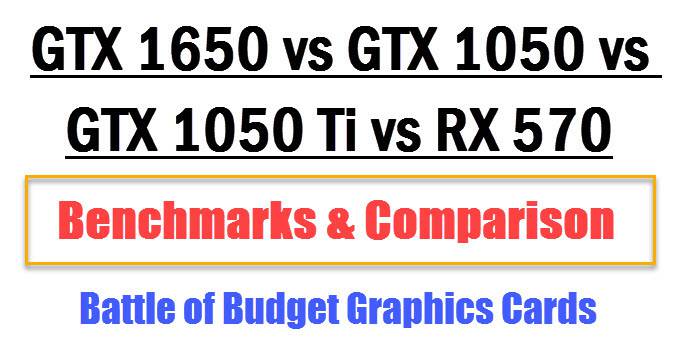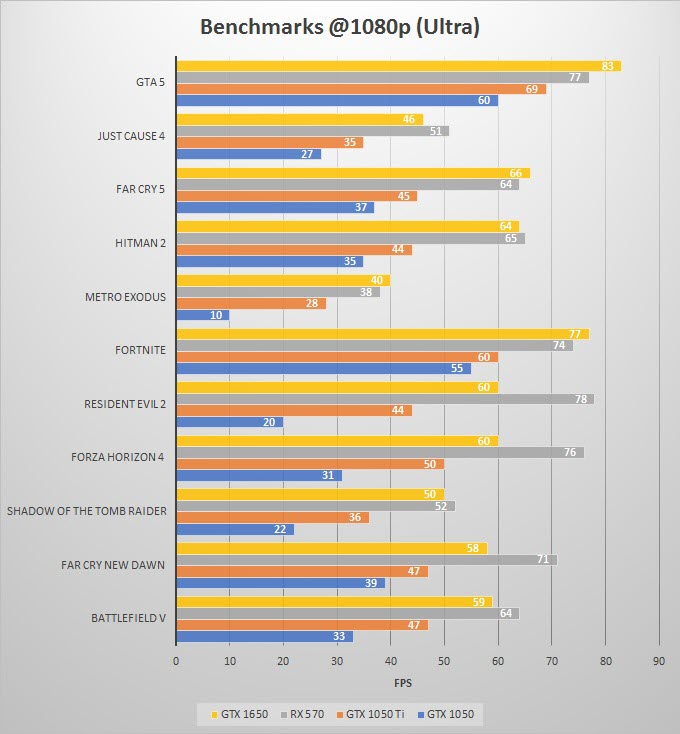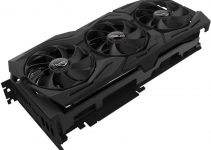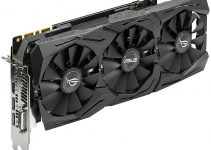GTX 1650 is the replacement for the GTX 1050 graphics card, which was one of the most popular budget graphics cards based on the Pascal GPU architecture. It was a value-for-money 1080p card and was capable of running most of the latest AAA games at high graphics (@1080p) settings without breaking any sweat. Now, GTX 1650 will fill the GTX 1050 shoes, and it is also pitted against the higher GTX 1050 Ti and Radeon RX 570, which are its main competitors, especially the Radeon RX 570 that offers great value for money, and is still a great 1080p card. So, if you are wondering about the GTX 1650 place in the current budget graphics cards lineup, then here I am going to compare it against its main competitors (RX 570, GTX 1050 Ti) and also to GTX 1050 to let you know about its relative performance, and which card is the best among all.

GTX 1650 vs GTX 1050 vs GTX 1050 Ti vs RX 570
Here is the comparison between GTX 1650, GTX 1050, GTX 1050 Ti, and RX 570 graphics cards, based on their specifications, performance, pricing, power consumption, and features.
GPU Architecture
GTX 1050 and GTX 1050 Ti are GTX 10 series graphics cards built on the Pascal GPU architecture on the 14nm manufacturing process. GTX 1050 Ti comes with 768 CUDA Cores, while GTX 1050 has 640 CUDA Cores for 2GB and 768 CUDA Cores for a 3GB variant. On the other hand, GTX 1650 is built on Turing GPU architecture on a smaller 12nm fabrication process and comes with 896 CUDA Cores.
Radeon RX 570 is an AMD graphics card, which uses different technology in terms of GPU architecture. It is built on the Polaris GPU architecture on the 14nm process and comes with 2048 Stream processors, which are completely different from CUDA Cores and cannot be equated together. You can learn more about the CUDA Cores and Stream Processors by going through the link given below.
Must Read: CUDA Cores vs Stream Processors Explained
| GTX 1050 | GTX 1050 Ti | RX 570 | GTX 1650 | |
| GPU Chip | GP107 | GP107 | Polaris 20 | TU117 |
| GPU Architecture | Pascal | Pascal | Polaris | Turing |
| Manufacturing Process | 14nm | 14nm | 14nm | 12nm |
| CUDA Cores / Stream Processors | 640 CUDA Cores | 768 CUDA Cores | 2048 Stream Processors | 896 CUDA Cores |
Memory [VRAM]
When it comes to video memory, then Radeon RX 570 is clearly the winner. The card comes with either 4GB or 8GB of GDDR5 memory having 256-bit interface and offers the highest bandwidth here, which is 224 GB/s. The higher bandwidth and more memory benefits in high-resolution gaming and also help in games with add-on texture packs or with games that have more advanced textures to deal with.
On the other hand, GTX 1650 and GTX 1050 Ti come with 4GB GDDR5 memory having 128-bit interface, but the GTX 1650 is a little faster with memory clock speed of 8 Gbps, against 7 Gbps of GTX 1050 Ti. The GTX 1050 has the least amount of memory here and comes with either 2GB (128-bit) or 3GB (96-bit) GDDR5 memory.
| GTX 1050 | GTX 1050 Ti | RX 570 | GTX 1650 | |
| Memory Size | 2GB / 3GB GDDR5 | 4GB GDDR5 | 4GB / 8GB GDDR5 | 4GB GDDR5 |
| Memory Interface | 128-bit / 96-bit | 128-bit | 256-bit | 128-bit |
| Memory Speed | 7 Gbps | 7 Gbps | 7 Gbps | 8 Gbps |
| Memory Bandwidth | 112 GB/s / 84 GB/s | 112 GB/s | 224 GB/s | 128 GB/s |
Features
All these graphics support DirectX 12, Open 4.5, OpenCL, and Vulkan API, and support dynamic refresh rate technology to prevent screen tearing in games, which is G-Sync for Nvidia and FreeSync for AMD. The Nvidia cards here do not support SLI multi-GPU configuration, but Radeon RX 570 is CrossFire ready, which means you can multiple RX 570 cards in multi-GPU mode (mGPU). Well, all these cards are not VR Ready, and the only one that comes close to offering some decent VR performance is RX 570. Also, all these cards come with dedicated support for hardware-based 4K H264 / H265/HEVC Encoding and Decoding, which makes them useful in video editing and rendering tasks. The feature that is exclusive to GTX 1650 is adaptive shading in games.
Gaming Performance
Here are some gaming benchmarks of these budget graphics cards in various popular AAA titles at 1080p resolution.

From the above benchmarks, you can clearly see that Radeon RX 570 beats GTX 1650 comfortably in almost all the games, and is the fastest card here. It is around 10% to 20% faster than GTX 1650, which is a decent margin. On the other hand, GTX 1650 is around 60% faster than GTX 1050, which it replaces, and about 25% to 35% faster than GTX 1050 Ti.
Check out: Best GTX 1650 Graphics Cards for eSports & 1080 Gaming
Power Consumption
When it comes to power consumption, then RX 570 loses out to all the Nvidia cards here. It has the highest power consumption here, which is 150W, and requires a 450W PSU, and a 6-pin or 8-pin PCIe power connector for its working. On the other hand, GTX 1050, GTX 1050 Ti, and GTX 1650 are low-power cards having power consumption of 75W and they only need a 300W PSU for their working. All of these Nvidia cards do not require an external PCIe connector, but some highly overclocked models of GTX 1050 Ti and GTX 1650 do require a 6-pin PCIe connector for power.
Check out: Best Budget PSU for Graphics Cards or Gaming PC
| GTX 1050 | GTX 1050 Ti | RX 570 | GTX 1650 | |
| Power Consumption | 75W | 75W | 150W | 75W |
| Recommended PSU | 300W | 300W | 450W | 300W |
Pricing & Availability
The base model of GTX 1650 is priced at $149 MSRP, which is the same price at which RX 570 currently sells. GTX 1050 and GTX 1050 Ti are priced lower at their launch but now they are being sold at prices higher than $149, and are currently getting phased away because of depleting stock. You can check the current prices of these graphics cards from the links given below.
Check GTX 1650 Price on Amazon
Check GTX 1050 Ti Price on Amazon
Check GTX 1050 Price on Amazon
GTX 1650 vs RX 570 vs GTX 1050 vs GTX 1050 Ti Specifications
| Specifications | GTX 1050 | GTX 1050 Ti | RX 570 | GTX 1650 |
| GPU Chip | GP107 | GP107 | Polaris 20 | TU117 |
| GPU Architecture | Pascal | Pascal | Polaris | Turing |
| CUDA Cores / Stream Processors | 640 CUDA Cores | 768 CUDA Cores | 2048 Stream Processors | 896 CUDA Cores |
| Memory Size | 2GB / 3GB GDDR5 | 4GB GDDR5 | 4GB / 8GB GDDR5 | 4GB GDDR5 |
| Memory Interface | 128-bit / 96-bit | 128-bit | 256-bit | 128-bit |
| Memory Speed | 7 Gbps | 7 Gbps | 7 Gbps | 8 Gbps |
| Memory Bandwidth | 112 GB/s / 84 GB/s | 112 GB/s | 128 GB/s | |
| Bus Interface | PCI Express 3.0 | PCI Express 3.0 | PCI Express 3.0 | PCI Express 3.0 |
| DirectX | 12 | 12 | 12 | 12 |
| OpenGL | 4.5 | 4.5 | 4.5 | 4.5 |
| Vulkan API | Yes | Yes | Yes | Yes |
| SLI / CrossFire support | NA | NA | Yes, CrossFire | NA |
| VR Ready | No | No | Yes | No |
| G-Sync / FreeSync | G-Sync | G-Sync | FreeSync | G-Sync |
| Power Consumption | 75W | 75W | 150W | 75W |
| Recommended PSU | 300W | 300W | 450W | 300W |
See also:
Final Thoughts
GTX 1650 is Nvidia’s solution for the users belonging to the budget gaming segment. The card is pretty good, but not that exciting because of its lower price-to-performance ratio compared to the Radeon RX 570 which offers significantly higher performance at the same price, and also comes with higher memory and more bandwidth. GTX 1650 is considerably faster than GTX 1050 and also faster than the GTX 1050 Ti. So, if I have to choose here, then I would certainly go for the Radeon RX 570 or even RX 580 which offers great value for your money. However, if you want a decent budget card that has lower power consumption and does not require an external PCIe power connector, then go for the base model of GTX 1650 (without a 6-pin PCIe connector variant) is a wise decision. If you have got any doubts regarding them, then feel free to ask me in the comment section below.
(*This post may contain affiliate links, which means I may receive a small commission if you choose to purchase through the links I provide (at no extra cost to you). Thank you for supporting the work I put into this site!)


![Best RX 6750 XT Cards for 1440p & 4K Gaming [Custom Models] Best RX 6750 XT Cards for 1440p & 4K Gaming [Custom Models]](https://graphicscardhub.com/wp-content/uploads/2022/05/XFX-SPEEDSTER-MERC-319-AMD-Radeon-RX-6750-XT-BLACK-211x150.jpg)
Is there any RX 570 model doesn’t require PCIe connector?
No
How about shader performance for 4K video decoding/playback? That is where my current card lets me down, not gaming FPS.
Since prices have stagnated with GTX 1050 and 1050TI, barely any less expensive than GTX 1650, I can’t see a reason to choose less than that, and RTX 570 at 150W TDP, just wastes too much power for video playback including the extra power demand on PSU which means more expensive higher wattage PSU or wearing it out faster, so more expense either way.
I would like to just fast forward to (maybe?) 18 months in the future and get a GTX 3050 TI for $150. 🙂
For 4K playback GTX 1650 or GTX 1650 SUPER should be enough and they also consume less power.
Yes/No/Maybe. I am not merely playing 4K, also using image enhancements through MadVR. You can scale those up until they pretty much consume any video card’s shaders.
As it is now, I have my GTX750TI set to run at full speed/power in nVidia control panel while running the video playback app to improve things and this does help, and it also helps that the image enhancements are more often needed on lesser resolution than 4K content to improve visual quality after upscaling.
The other thing the GTX750TI lacks is full H.265 decoding that the newer gen GPUs have, more of an issue now that it’s become more popular.
Hi Brother, Which card will be best considering power consumption and 60fps in Pubg mobile Gameloop
GTX 1050 2GB
GTX 1050 Ti
RX 560
Go with the GTX 1050 Ti.
Thanks dear you are so kind, please solve my confusion and recommend me best brands regarding my question.
Zotac gtx 1050 ti mini
GEFORCE GTX 1050 TI AERO ITX 4G
GEFORCE GTX 1050 TI 4GT OC
EVGA GeForce GTX 1050 Ti SC GAMING
All these brands are good. Get the one that you find cheapest.
Dear, in msi1050 ti which one will be good, single fan or dual fan both have same price.
If your PC case can support the dual-fan model then go for the dual fan one.